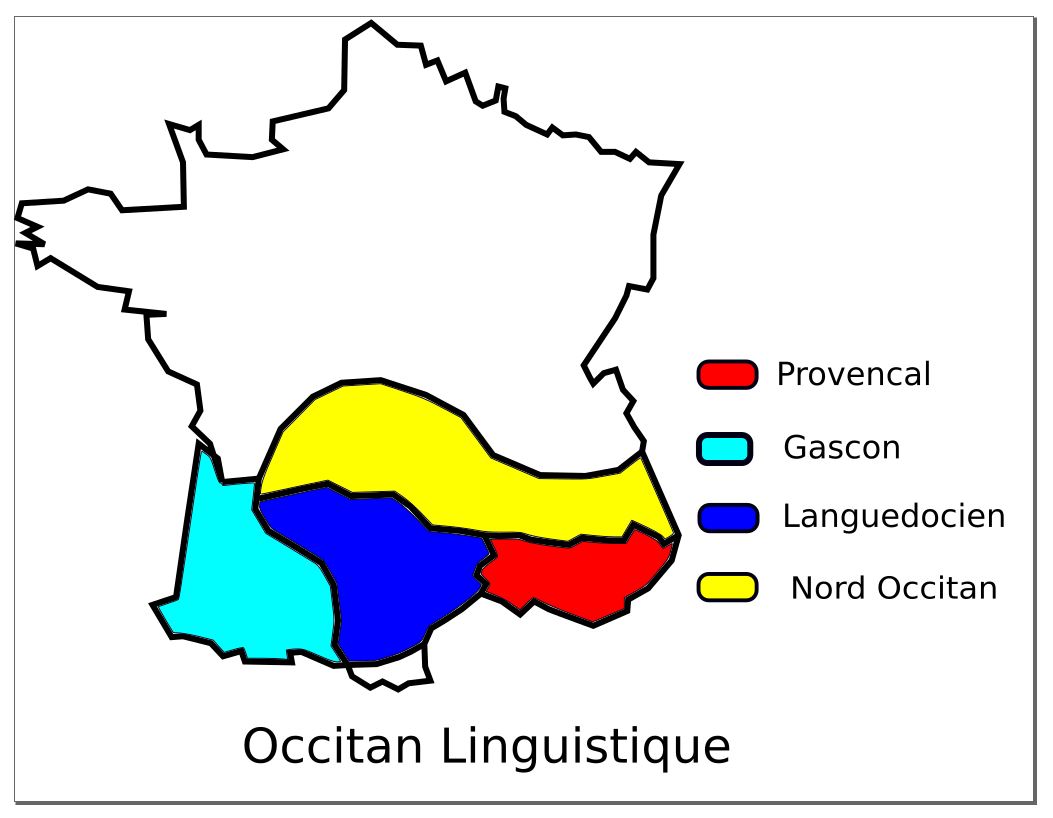I am sometimes criticized that the Chemins Occitans hikes are located in an area very large compared to the real size of Occitanie. To which I like to answer, we must consider Occitanie as a historical linguistic group rather than an administrative region dating from the 21st century. I am inspired by an excellent Toponymy book. In this book, it is clear that Occitanie is a vast linguistic space made up of 4 sub-groups covering the whole of the South of France :
After the Romans settled in Gaul in the 1st century BC. J.C, a Celtic language is spoken there, the “Gallic”. In the first centuries of the Christian era, Latin progressed. Thus appears the Gallo-Roman which itself differs after the Germanic invasions of the 5th century:
– Gallo-Roman from the north (language of oil: Latin hoc ille> oui
– southern Gallo-Roman: langue d’ooc: latin hoc> oui
The ensemble of oc, which has remained closer to Latin, is subdivided into four major dialects:
– The Languedocian
– The Occitan North –
The Provençal
– The Gascon ”
Toponymie des Pays Occitans de Bénédicte Boyrie-Fénié et Jean-Jacques Fénié (Editions Sud-Ouest)
This is how the Chemins Occitans offer walks and hikes beyond the Occitan administrative region without too much qualms, always with in focus the sensual wonder of walking and often the discovery of Occitan heritage from Toulouse. Below are some links to find out more about what I offer.

